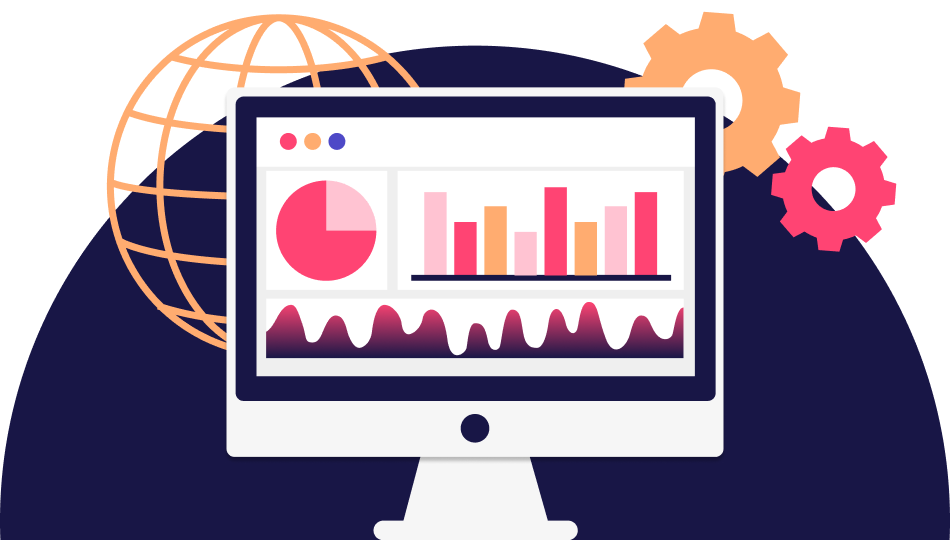Media monitoring report is the process of tracking and analyzing various media channels to gather information about specific topics, brands, or industries. It involves monitoring traditional media outlets such as newspapers, magazines, television, and radio, as well as digital platforms like social media, blogs, forums, and online news sites.
Importance of Media Monitoring Report

Media monitoring reports provide businesses with valuable insights into public perception, market trends, and competitor activities. By monitoring media coverage, companies can stay informed about relevant news and events, identify emerging issues or crises, and track the effectiveness of their marketing and PR efforts.
Components of a Media Monitoring Report
1. Data Collection
The first step in creating a media monitoring report is to gather relevant data from various sources. This may include collecting articles, mentions, or posts related to the target keywords or brands.
2. Analysis
Once the data is collected, it needs to be analyzed to extract meaningful insights. This involves categorizing and sorting the information, identifying key themes or trends, and evaluating the tone and sentiment of the coverage.
3. Insights Generation
Based on the analysis, insights are generated to help businesses understand the implications of the media coverage and identify opportunities or threats.
Types of Media Monitoring Reports
1. Traditional Media Monitoring Reports
Traditional media monitoring reports focus on tracking coverage in newspapers, magazines, television, and radio. They provide a comprehensive overview of mainstream media mentions and are often used for PR and brand management purposes.
2. Social Media Monitoring Reports
Social media monitoring reports track mentions and conversations on social media platforms such as Twitter, Facebook, LinkedIn, and Instagram. They offer insights into public sentiment, brand engagement, and emerging trends in real time.
How Media Monitoring Reports Benefit Businesses
1. Reputation Management
Media monitoring reports help businesses monitor their online reputation by tracking mentions and sentiment across various channels. This allows companies to respond promptly to negative feedback or address misinformation before it escalates.
2. Crisis Management
In the event of a crisis or negative publicity, media monitoring reports enable businesses to assess the situation quickly and formulate an appropriate response. By monitoring media coverage and public sentiment, companies can mitigate reputational damage and regain control of the narrative.
3. Competitive Analysis
Media monitoring reports also provide valuable insights into competitor activities and industry trends. By monitoring competitor mentions and analyzing market dynamics, businesses can identify opportunities for differentiation and strategic positioning.
4. Market Intelligence
Media monitoring reports offer valuable market intelligence by tracking industry news, consumer trends, and emerging topics of interest. This information can inform product development, marketing strategies, and business decision-making.
Best Practices for Creating Effective Media Monitoring Reports
1. Define Objectives
Before creating a media monitoring report, it’s essential to define clear objectives and goals. Whether it’s tracking brand mentions, monitoring competitor activities, or assessing market sentiment, having a clear focus will ensure that the report delivers actionable insights.
2. Select Relevant Metrics
Choose metrics that align with your objectives and provide meaningful insights into your target audience, industry trends, and competitor activities. This may include metrics such as share of voice, sentiment analysis, engagement levels, and reach.
3. Utilize Automation Tools
Take advantage of automation tools and software platforms to streamline the data collection and analysis process. These tools can help you monitor multiple channels, track keywords and topics, and generate reports more efficiently.
4. Regular Reporting Schedule
Establish a regular reporting schedule to ensure consistency and accountability. Whether it’s daily, weekly, or monthly reports, maintaining a regular cadence will help stakeholders stay informed and make timely decisions.
5. Actionable Insights
Focus on delivering actionable insights that can inform business strategy and decision-making. Instead of just presenting data, provide analysis and recommendations that help stakeholders understand the implications of the media coverage and take appropriate action.
Future Trends
Discuss emerging trends and technologies in the field of media monitoring, such as artificial intelligence, machine learning, and sentiment analysis. Explore how these advancements are shaping the future of media monitoring and how businesses can stay ahead of the curve.
Conclusion
In conclusion, media monitoring reports play a crucial role in helping businesses stay informed, manage their reputation, and make data-driven decisions. By tracking media coverage across various channels and analyzing the data, companies can gain valuable insights into public perception, market trends, and competitor activities. By following best practices and embracing emerging technologies, businesses can maximize the value of media monitoring reports and stay ahead of the competition.
Ready to experience the power of media monitoring for your business? Request a demo from AIM Technologies today and discover how our advanced solutions can help you gain actionable insights and drive success.
FAQs
What is the difference between media monitoring and media analysis?
- Media monitoring involves tracking and collecting media mentions, while media analysis involves analyzing the data to extract insights and identify trends.
How often should I create media monitoring reports?
- The frequency of media monitoring reports depends on your specific goals and objectives. Some companies may require daily reports for real-time insights, while others may opt for weekly or monthly reports.
Can media monitoring reports help with crisis management?
- Yes, media monitoring reports are valuable tools for crisis management. By tracking media coverage and public sentiment, businesses can identify potential crises early and take proactive measures to mitigate reputational damage.
What metrics should I include in my media monitoring reports?
- The metrics you include in your media monitoring reports will depend on your objectives and goals. Common metrics include share of voice, sentiment analysis, engagement levels, and reach.
How can I stay updated on future trends in media monitoring?
- To stay updated on future trends in media monitoring, consider subscribing to industry publications, attending conferences and webinars, and networking with other professionals in the field.




